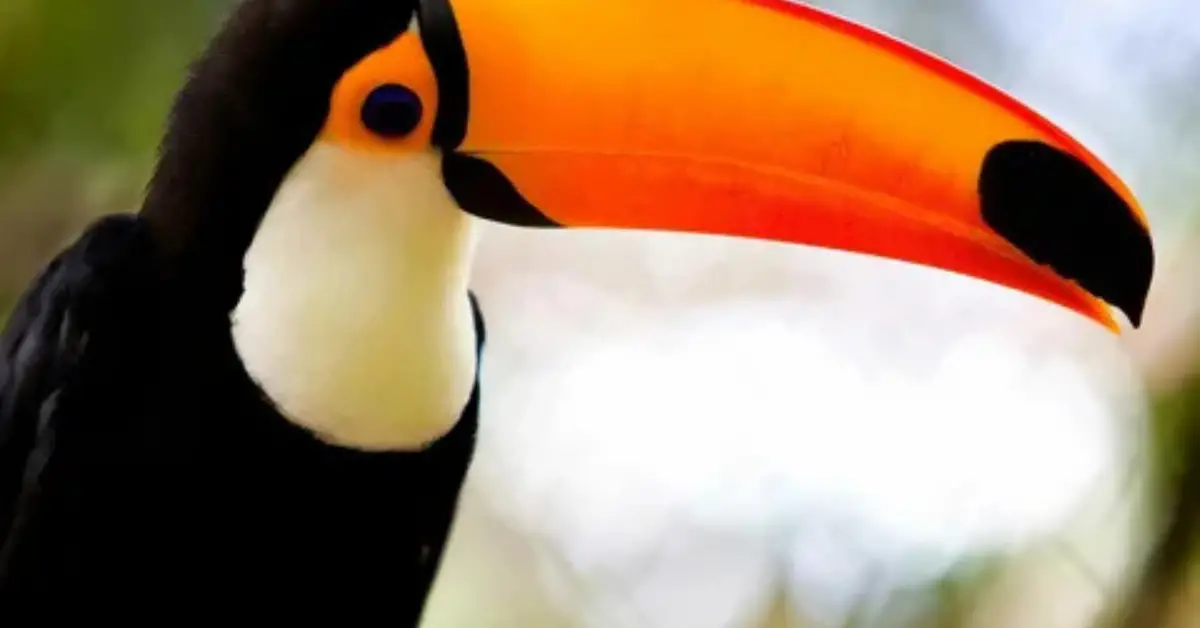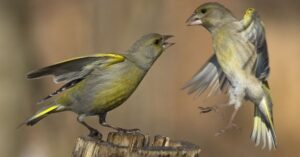Birds with orange beaks can be found across various continents, each exhibiting unique behaviors and adaptations. These striking avian species not only captivate birdwatchers with their vibrant coloration but also play good roles in their ecosystems. Orange-beaked birds exhibit a striking visual appeal that captivates birdwatchers and nature enthusiasts alike.
The orange beak of the Toco Toucan is not merely for show; it helps regulate body temperature and enables the bird to crack open tough fruits and nuts, showcasing an incredible adaptation to its tropical habitat. In this article, we will talk about the fascinating world of birds with orange beaks.
Facts About Birds With Orange Beak
Among the fascinating species boasting orange beaks are the Black-capped Lory and the Roseate Spoonbill. The lory’s brilliant plumage combined with its orange beak creates a stunning contrast, allowing it to thrive in the lush forests of New Guinea.
The spoonbill’s unique beak shape, tinted with shades of orange, is perfectly designed for foraging in shallow waters, highlighting the diversity of adaptations found within this colorful group. Whether perched high in a tree or wading through wetlands, orange-beaked birds offer a vivid reminder of nature’s creativity and the intricate relationships between form, function, and environment.There are also so many birds that lay blue eggs you can also read about these birds through the given link.
American White Pelican
The American White Pelican is a remarkable example of birds with orange beaks that captivate birdwatchers and nature enthusiasts alike. These large, majestic birds can weigh up to 30 pounds and boast a wingspan that can stretch over nine feet.
Their striking orange beak, which can measure up to 12 inches long, is not just for show. During the breeding season, the beak’s vibrant hue intensifies, signaling to potential mates and showcasing their health and vitality.

American White Pelicans have a unique fishing technique that sets them apart from other orange beaks bird. They often hunt in cooperative groups, herding fish into shallow waters where they can easily scoop them up with their large bills. This social behavior not only increases their foraging success but also highlights their intelligent adaptability in various habitats, from lakes to coastal marshes.
Atlantic Puffin
The Atlantic Puffin, often celebrated as one of the most charming birds with orange beaks, captivates nature enthusiasts and casual observers alike with its striking appearance and unique behaviors.Known for their impressive diving abilities, puffins can reach depths of up to 60 meters while foraging for fish. Their brightly colored beaks, which are especially vibrant during the breeding season, serve not only as a visual spectacle but also as a signal of health and vitality to potential mates.

Atlantic Puffins exhibit intriguing social behaviors that highlight their intelligence and adaptability. They are known to nest in large colonies, creating a bustling atmosphere on rocky cliffs where they raise their young. Interestingly, puffins have a remarkable ability to carry multiple fish in their beaks at once up to 10.This skill allows them to maximize their foraging efficiency, making them adept hunters in the competitive marine environment.
Mute Swan
The Mute Swan, easily identifiable by its elegant neck and striking white plumage, is a fascinating member of the family of birds with orange beaks. While their beauty is undeniable, these swans possess a remarkable ability to adapt to various habitats, from serene lakes to bustling urban parks.
What sets the Mute Swan apart from other waterfowl is its strong parental instincts. These birds exhibit a remarkable devotion to their cygnets, often seen gliding gracefully across the water with their young tucked safely beneath their wings. The bond between the parents and their offspring is not only heartwarming but also important for survival, as the young swans rely on their parents for protection and guidance during their vulnerable early stages of life.
Toco Toucan
The Toco Toucan is the most iconic representative among birds with orange beaks, boasting a vibrant, oversized bill that can measure up to eight inches long. This distinctive feature, while seemingly impractical, serves multiple purposes. It aids in thermoregulation, helping the toucan manage its body temperature in the humid tropical environments of South America.

Feeding primarily on fruits, the Toco Toucan also indulges in insects and small vertebrates, showcasing its adaptability in foraging habits. Their unique feeding strategy involves using their large bill to knock fruit from branches or to reach into tight spaces within the canopy where smaller birds might struggle. They have a symbiotic relationship with certain fruit-bearing trees; by consuming and dispersing seeds, they contribute to forest regeneration.
Royal Tern
The Royal Tern, a striking seabird found along coastal regions of the Americas, is easily identifiable by its elegant stature and distinctive orange beak. This bird, part of the tern family, boasts a sleek silhouette with a graceful wingspan that can stretch up to 40 inches. During the breeding season, its head is adorned with a charming black cap, further enhancing its regal appearance.

These birds are often seen in large colonies, where they engage in elaborate courtship displays that include synchronized flying and vocalizations. Their communal nesting sites are not just functional but also serve as a testament to their social nature, reflecting a sophisticated understanding of collective safety. As climate change and habitat loss threaten their coastal environments, conservation efforts are increasingly vital to ensure that future generations can marvel at these elegant birds in their natural settings.
Zebra Finch (Male)
The male zebra finch is a striking embodiment of avian beauty, adorned with vibrant plumage that captivates birdwatchers and casual observers alike. Notably, these small birds are among the few species where sexual dimorphism is pronounced; while females sport more subdued hues, males flaunt bright orange beaks and distinctive black and white markings.
Their beaks, a vivid orange, not only serve as a hallmark of their identity but also play a crucial role in attracting mates. This flashy coloration signals health and vitality, traits that female zebra finches seek when selecting a partner.
Male zebra finches are renowned for their complex vocalizations. These charming singers engage in elaborate courtship displays, often imitating sounds from their environment, including other birds and even mechanical noises. This mimicry showcases their adaptability and intelligence, traits that enhance their appeal in the wild.
Conclusion
Birds with orange beaks are not only visually striking but also play significant roles in their ecosystems. These birds often exhibit unique behaviors and adaptations that help them thrive in diverse environments.Knowing about their diet, mating habits, and migratory patterns can provide valuable insights into their ecological importance. As we continue to study these fascinating creatures, it becomes crucial to protect their habitats from environmental threats.
FAQ’s
Why do some birds have orange beaks?
The coloration can serve several purposes, including attracting mates, signaling health and vitality, or camouflaging in their natural habitats.
Are orange beaks a sign of good health in birds?
Yes, vibrant beak color often indicates good health and proper nutrition. A dull or discolored beak can suggest illness or dietary deficiencies.
How do orange-beaked birds adapt to their environment?
Orange-beaked birds often have specialized feeding habits that allow them to thrive in their specific habitats, such as foraging for fruits, insects, or fish.
How can I identify an orange-beaked bird if I see one?
Look for additional identifying features such as body size, plumage colors, and distinctive markings. Field guides or bird identification apps can also assist in accurate identification.
What bird has a curved orange beak?
White Ibises are large wading birds with football-shaped bodies. They have long legs and a long neck that they hold out straight in flight. Their bill is long and curved.
- How To Keep Bees Away From Hummingbird Feeders - March 20, 2025
- How To Attract Owls To Your Yard - March 11, 2025
- Breeding Season For Wild Birds - March 9, 2025








